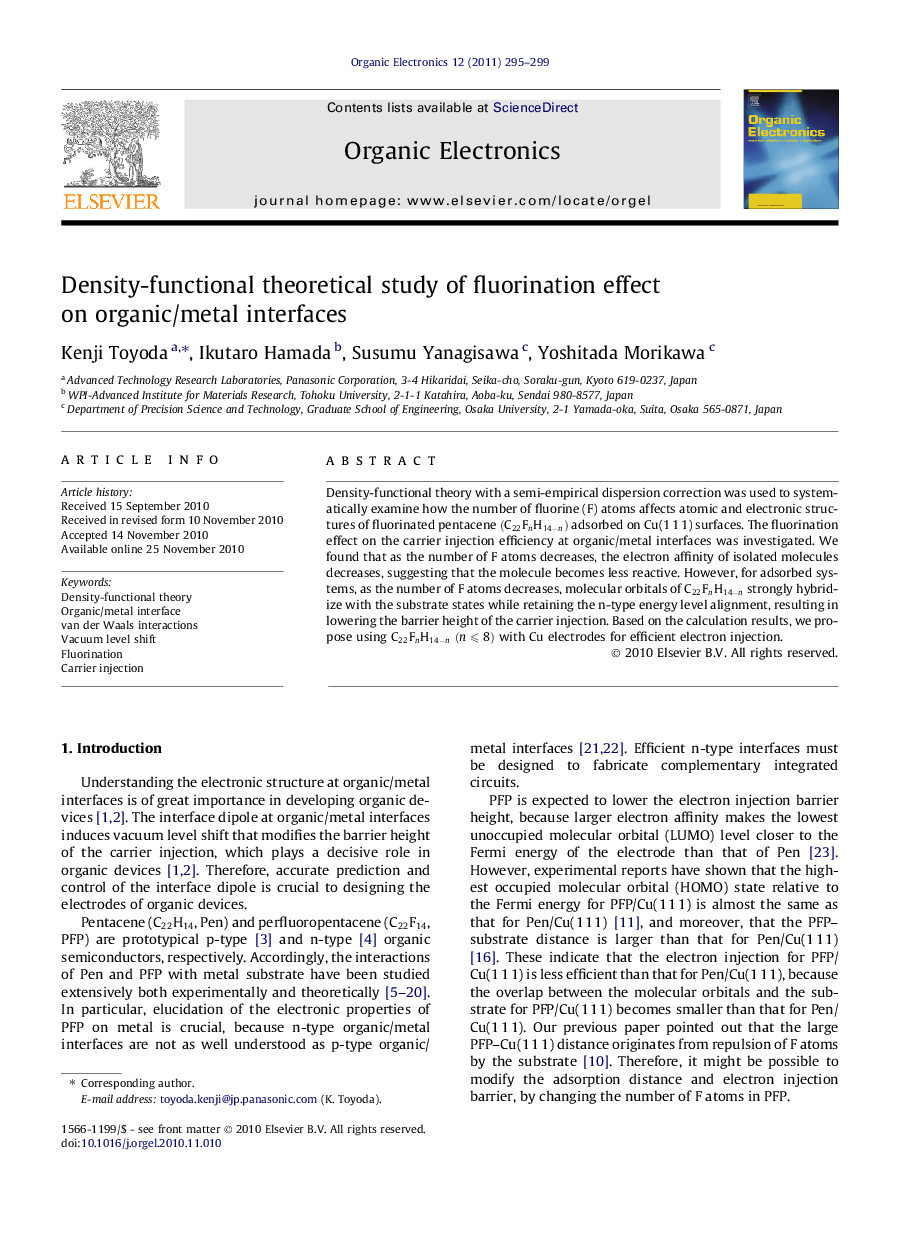| Article ID | Journal | Published Year | Pages | File Type |
|---|---|---|---|---|
| 1264767 | Organic Electronics | 2011 | 5 Pages |
Density-functional theory with a semi-empirical dispersion correction was used to systematically examine how the number of fluorine (F) atoms affects atomic and electronic structures of fluorinated pentacene (C22FnH14-n)(C22FnH14-n) adsorbed on Cu(1 1 1) surfaces. The fluorination effect on the carrier injection efficiency at organic/metal interfaces was investigated. We found that as the number of F atoms decreases, the electron affinity of isolated molecules decreases, suggesting that the molecule becomes less reactive. However, for adsorbed systems, as the number of F atoms decreases, molecular orbitals of C22FnH14-nC22FnH14-n strongly hybridize with the substrate states while retaining the n-type energy level alignment, resulting in lowering the barrier height of the carrier injection. Based on the calculation results, we propose using C22FnH14-n(n⩽8) with Cu electrodes for efficient electron injection.
Graphical abstractFigure optionsDownload full-size imageDownload as PowerPoint slideResearch highlights► We investigate the fluorination effect on organic/metal interfaces using density-functional theory with a semi-empirical dispersion correction. ► For fluorinated pentacene (C22HnF14-n)(C22HnF14-n) adsorbed on Cu(1 1 1), as the number of F atoms decreases, molecular orbitals of C22HnF14-nC22HnF14-n strongly hybridize with Cu substrate states while retaining the n-type energy level alignment. ► We propose using C22FnH14-n(n⩽8) with Cu electrodes for efficient electron injection.
